Photos from the opening of the Rostantskaya
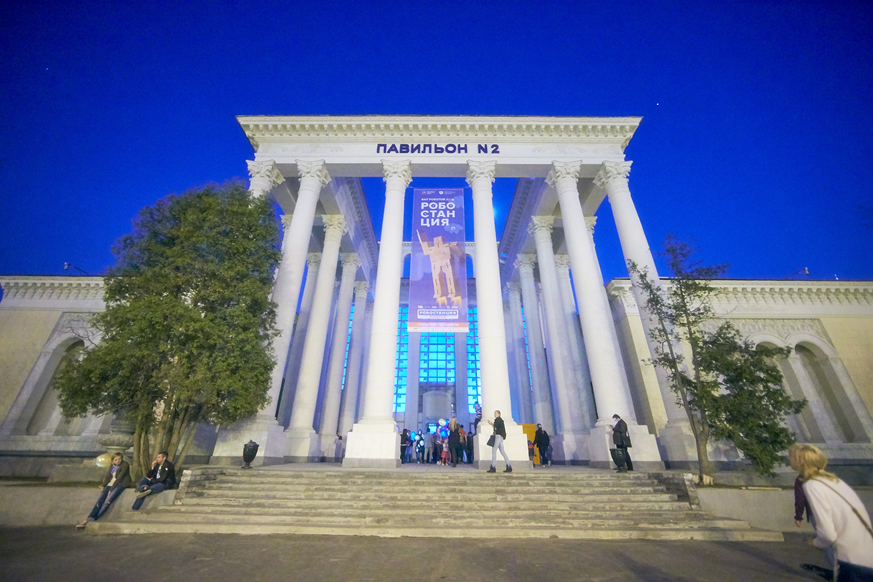
Outside you can’t say that inside is a huge pavilion.
Before the May ones, I managed to attend the opening of the Rostrum - these are three thousand square meters of robotics, various robots. Even at the opening came various cones from cybernetics, I was able to informally communicate with three of them, and they gave me answers to questions about robots that had tormented me long ago.
The robotic station is a cool hybrid of an exhibition, a laboratory, an amusement park and a summer camp for children - all in DIY format. It’s hard to describe all this in one word, that's why I’ll focus on photos.
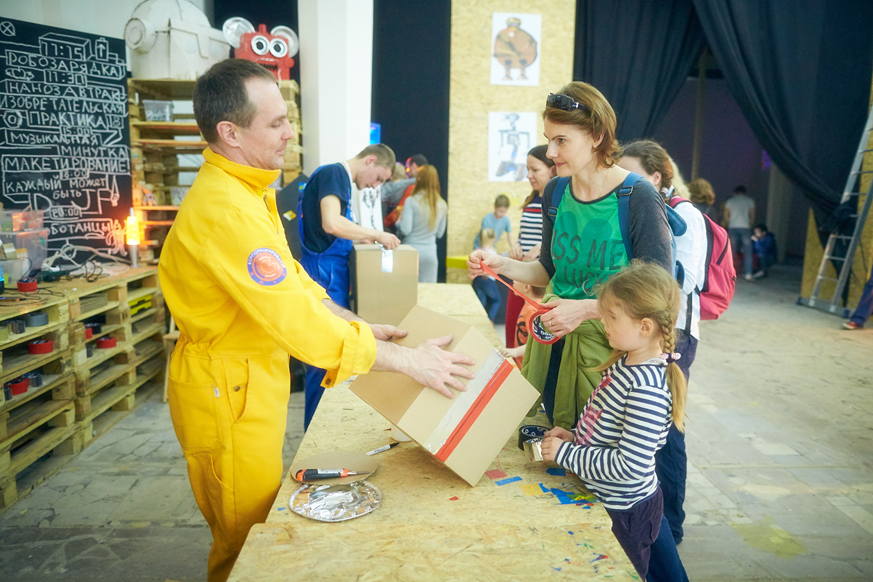
There is a Workshop, where with the help of cool fantasy boxes children turn into robots.
')
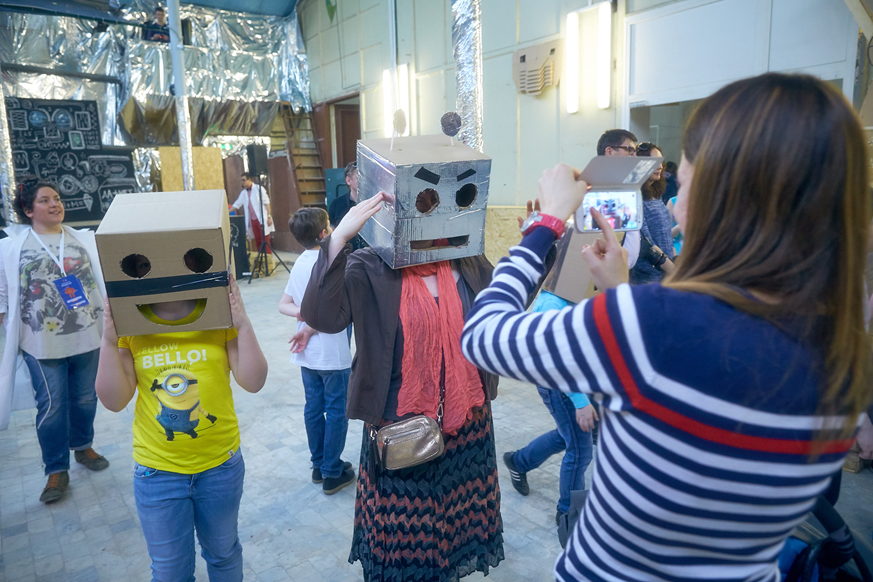
As a result of the exhibition runs a crowd of cardboard robots.
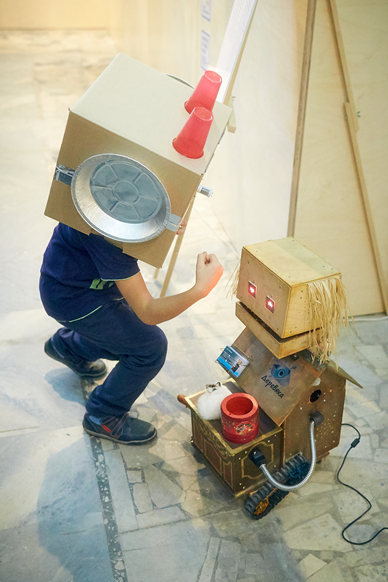
DIY
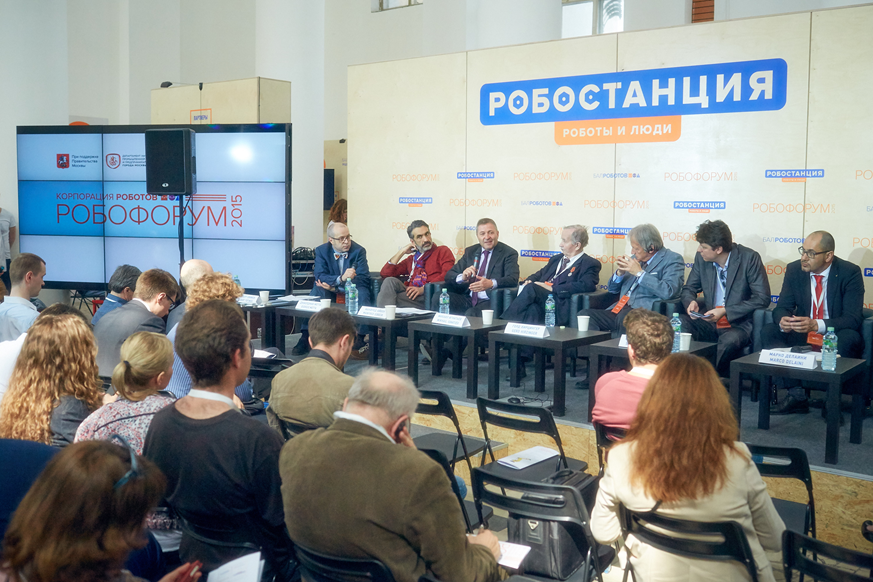
Right behind the entrance is the Azimov lecture hall. On the left sits the first bump - director of the largest cybernetic corporation FANUC .
After the speech, I asked him what stops us from the start of mass production of robots that will replace a person in the economy?
It turned out that nothing! Marco Delainni says that they have already switched to such a scheme for ten years. How exactly does this future look like?

Since the Japanese cannot afford migrant workers and the transfer of production to third world countries, they simply have to use robots.
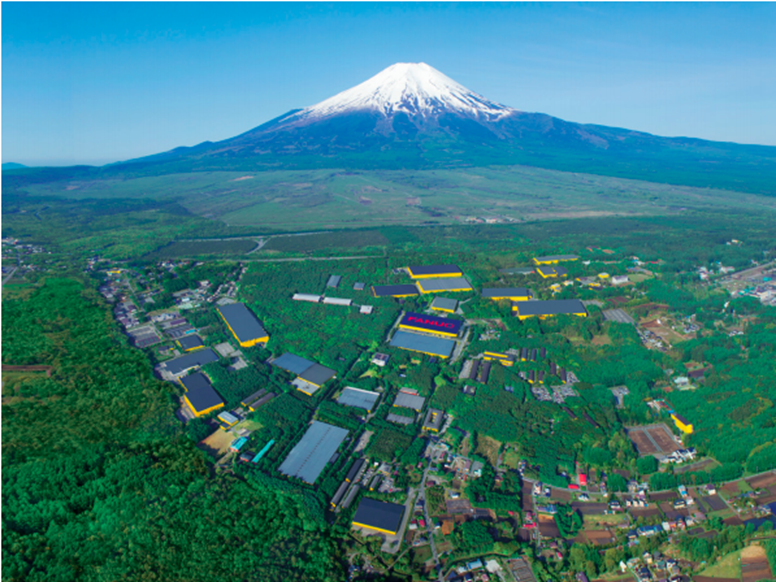
At this factory at the foot of Fuji with an area of three thousand square meters, only robots work - they do not need light, ventilation or dining. They just load the raw materials and every day they give out 50 new robots. None of the engineers even go into the shop - over the past 15 years the factory has not had a single failure or stop the conveyor. By the way, these are the only plants in Japan that did not rise due to the recent earthquake and tsunami, which they are very proud of.
I did not find the pictures of the plant, but here is the video. Reminds the movie "Screamers" , if you know what I mean.
It looks awesome if you keep in mind that these robots will never stop - the factories even have their own power supply. Today, FANUC has fourteen such plants. All of them are serviced by only five hundred engineers, which does not prevent the company from producing robots in ever-increasing quantities. At the moment they have sold about a million machines and robots, which is not so little if we remember that today there are 20 million robots on the planet, their population is growing faster (30% per year), and the lifespan has risen from 10 to 15 years old. Robotics today is a market with an annual turnover of $ 30 billion. And only in the next two years, manufacturers are planning to sell already 30 million robots, and yet in 1998 there were only 200,000 robots!

Cosmonaut Vladimir Kovalenok came to speak at the opening, asked the young people to go to the engineers, saying that astronauts in orbit really lacked the friendly shoulder of reliable robots.

Since the event is international, the mayor Sobyanin also came to see the robots.
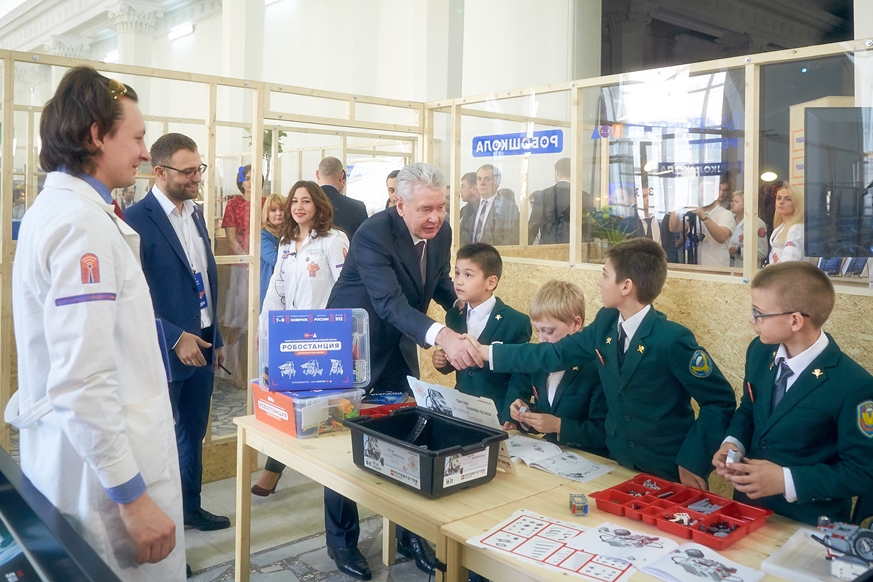
Sergey Semenovich thinks about his future and is friends with promising cybernetic.

In robb school, in general, everything is serious, they are clearly not up to the guests.
But the coolest thing in the whole exhibition is a pair of Total Interactive virtual reality seats. In them, the simulation of a space fighter for two is spinning and one must pay tribute - I have never seen anything more realistic in life. A very strong impression - my flight lasted about ten minutes, but in an armchair two hours passed, no less.
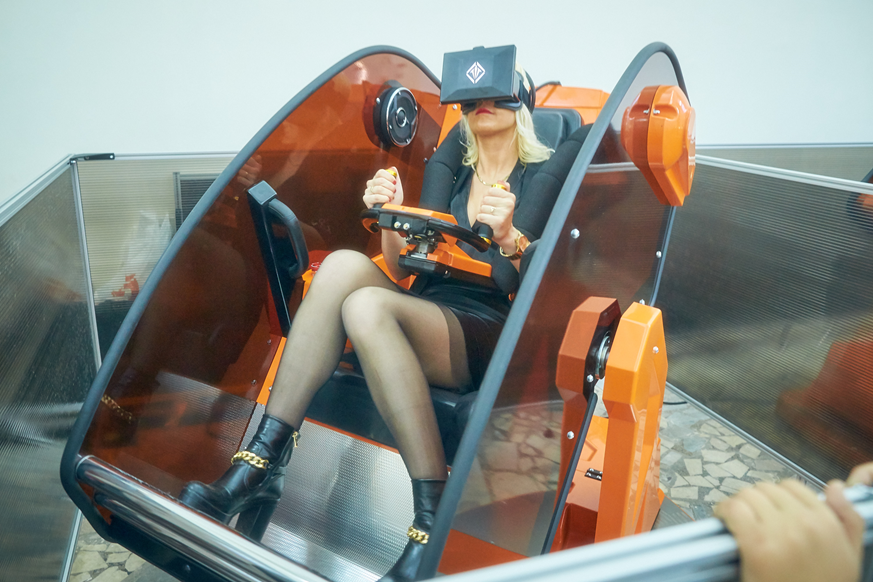
The seats rotate sharply and steeply almost 360 degrees, and the helmet is just an order of magnitude higher than the rift oculus in image quality. And all this is domestic development.

In addition, the exhibition looks like all the famous virtual reality helmets.

Even Kamaz did not stand aside
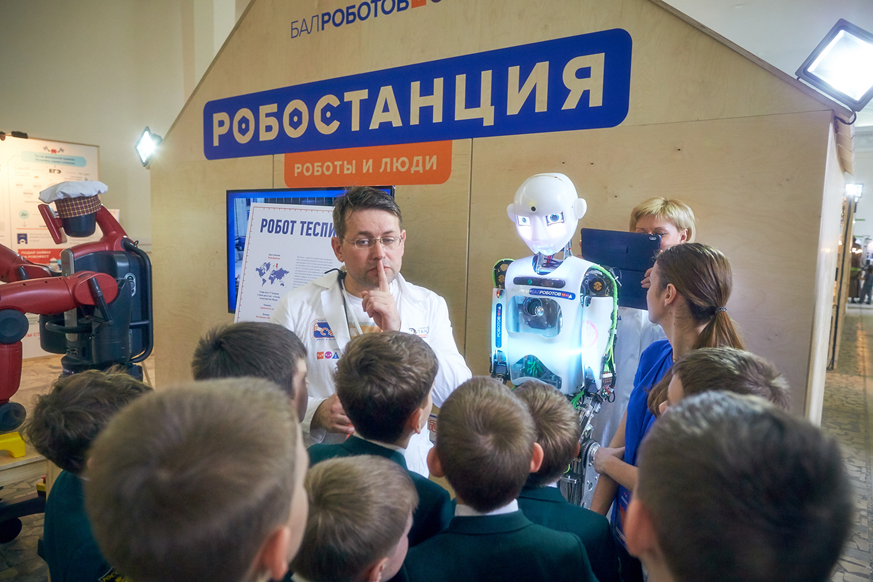
There are two Tespians at the exhibition, they help the guides.

This guy apparently ran away from a Japanese factory to play a ball here.
So what's the problem, why are humanoid robots still not walking our streets?
With this question, I turned to another guru of Japanese robotics - Tomotake Takahashi . He specializes in sociable robots, one of them even flew the ISS.
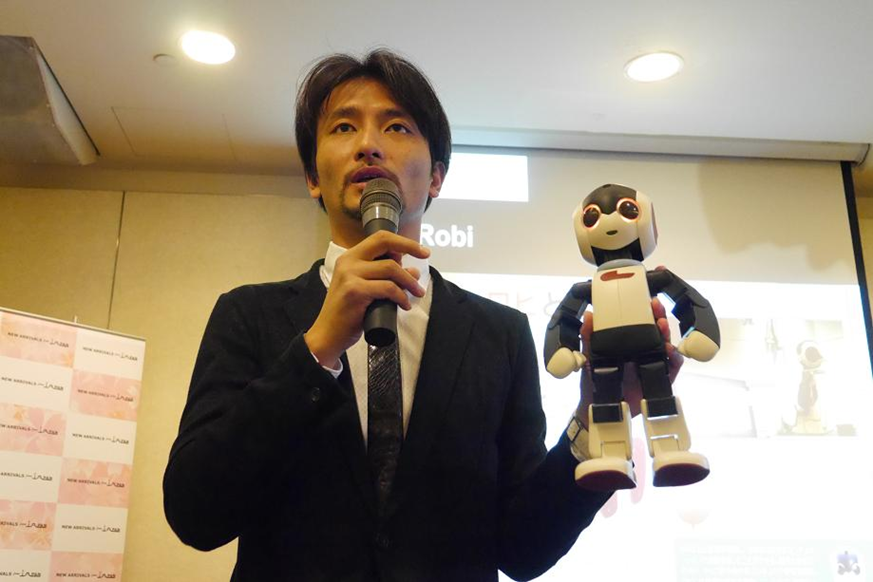
Takahashi is deeply convinced that the main thing in robots is humanity and culture of communication. This is very similar to the early years of the Internet.
Even if tomorrow you have a robot, you can not even think of what to charge him. The Internet appeared in 1994, but until 2000 it was empty while people were learning how to use it. And how should you talk with a mechanical person, what can he and how can you ask him about it? It is necessary to know and be able to, as long as it is available to hundreds of other engineers, after some time the robot will be in every home. As happened to the Internet. In 1994, it was used by 500 engineers, today the computer is in every home, and the Internet in general is in everyone’s pocket.

Almost pocket Kirobo eighteen months was a member of the crew of the ISS.
That is why he makes pocket robots created for communication. What is the principle? You know from all the ancient architecture through the Middle Ages only one book reached us, it is called “10 books on Vitruvius architecture” - the whole idea of a book comes down to one maxim - “man is the measure of all things”, and the proportions of doors are derived from this maxim ceilings and size of windows.
The same should be done with robots - well, tell me honestly, do you use Siri? Talking to the phone is ridiculous. Now imagine that you have a small robot in your shirt pocket, endowed with personality and character. This is a completely different matter - it was to verify these statements that Kyrobo spent a year and a half in space, tightly communicating with astronauts in orbit, and he worked well.

Some of the robots were just not to get close because of the journalists.

For others, on the contrary, it is more interesting to watch from the sidelines.
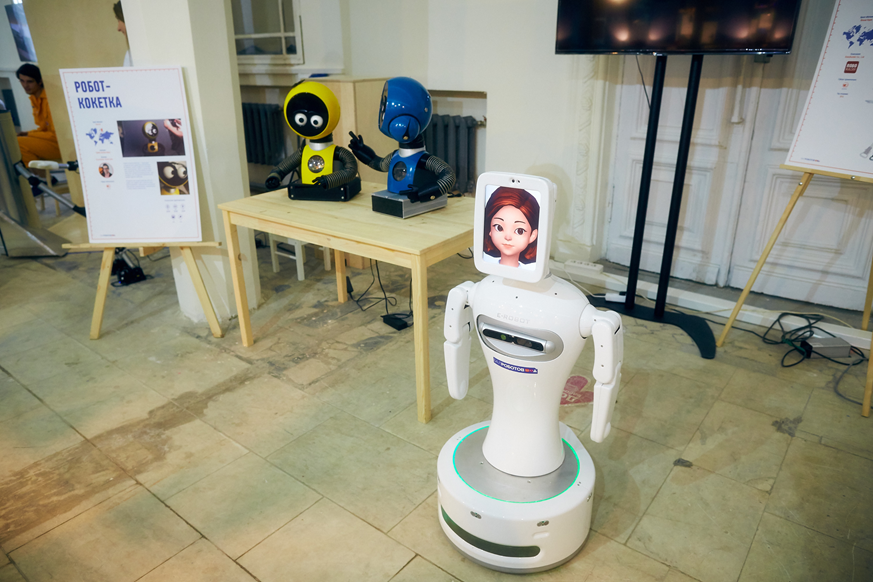
Someone himself comes with you to contact

But a robot that seems to just die if it is not ironed for a couple of hours.
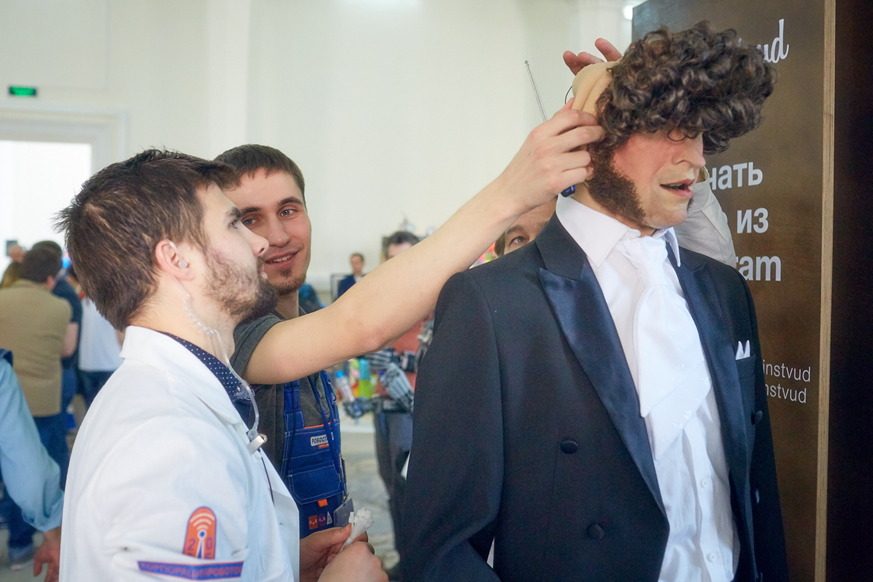
Pushkin change the block version.

Almost every robot has an engineer and most often is its creator. The photo shows Jan De Coster from Belgium and his robot Rachel - and the whole thing happens in the workshop where you can assemble your robot.
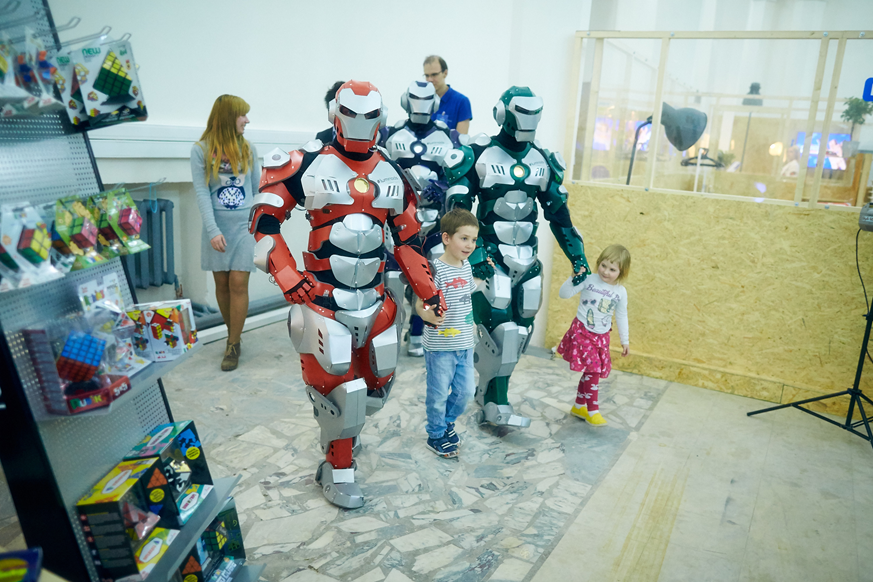
And it is clear that people!
So what's stopping big, real, fully anthropomorphic robots to replace people?
I was answered by an English specialist, Peter Redmont from Dublin. Redmond was a simple Air Force engineer until he got on the BBC television channel into the Battle of Robots program, now he is a leading English cyberneticist and his view on the issue of robots turned out to be really interesting.

His Rubot2 is the world champion in speeding Rubik's cube.
Peter believes that there are only two problems facing robotics. Little - technical vision. A person spends 10% of his computing resources on the recognition of visual images. Even to these 10% we will crawl at best in twenty years.
All because of "von Neumann architecture", which is extremely unfortunate for pattern recognition and image processing in general. As is well known on such an architecture, it is difficult to recognize five images at the same time - for 7 you already need a supercomputer. There is some hope for neural networks like the IBM TrueNorth chip, but Peter does not believe in them. His forecast for humanoid robots is 2050.

For now, instead of a positron brain, robots have a “wooden box”.
Until then, we can only do robots sharpened to one thing. Machines that are universal, like humans, require similar computational power, fundamentally different processors and memory.
But vision and logic are a matter of technology, much more concerned about the legal side of things. Because it is radically incomprehensible how legally perceive robots. Imagine that in a car the autopilot is a robot? Is he intelligent? And the military drone shooting at the enemy - who is responsible for it - the pilot, owner, manufacturer or the robot itself? In general, there is a whole bunch of problems that we prefer not to touch today.

The fact is that it is not even the laws that have to change here, but the very perception of man. To talk about such things at all, one must first understand the difference between a man and his body. These are two different things, but legally they are one whole - hence all these problems in Europe with donation, euthanasia and all that. After all, it is obvious that the human mind and body are two different things - I generally think when looking at robots, we first of all start to understand ourselves better. First of all, we will understand that person and mind are computer programs and all rights and laws must be extended to programs.
And who is now ready to talk about such things? So we get what we get.
On this optimistic note, you can go to the children's section - it probably takes half of the exhibition, and what is there not. I am even sorry that I am already so old!
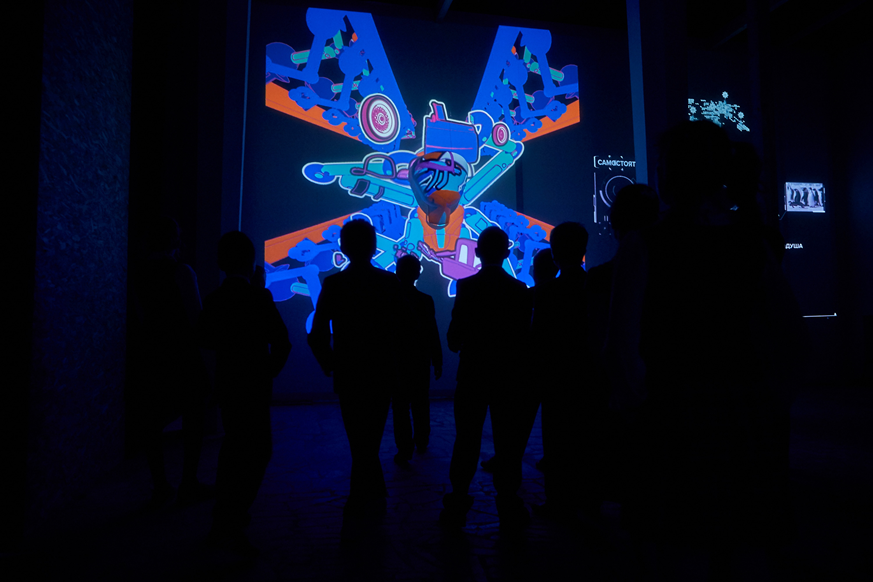
A separate room was given a video mapping about a family of robots, cool when the whole room turns into a single panoramic screen.

At the exit from the mapping room a robot bartender Homer is working. Does it seem to me, or is he mixing fluids with the help of artificial hearts?

You can compete with a robot in basketball
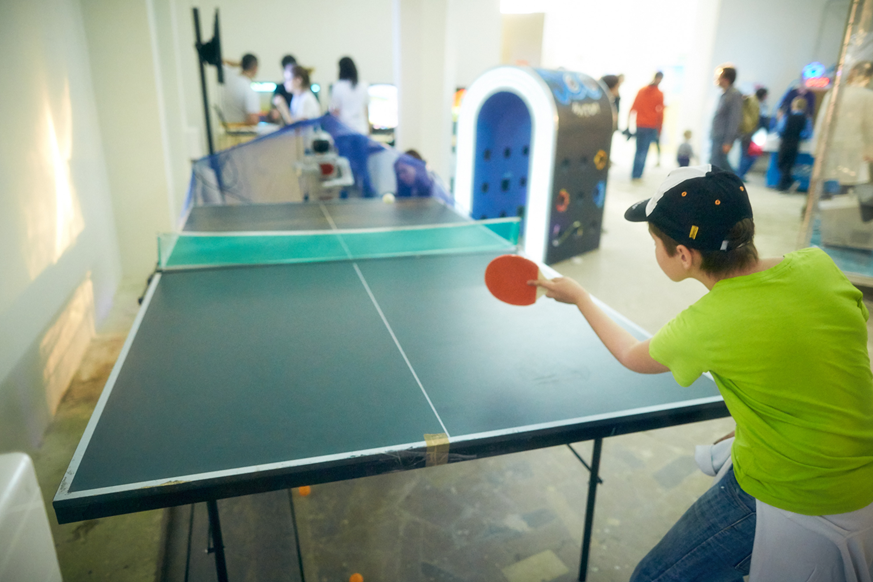
Ping pong
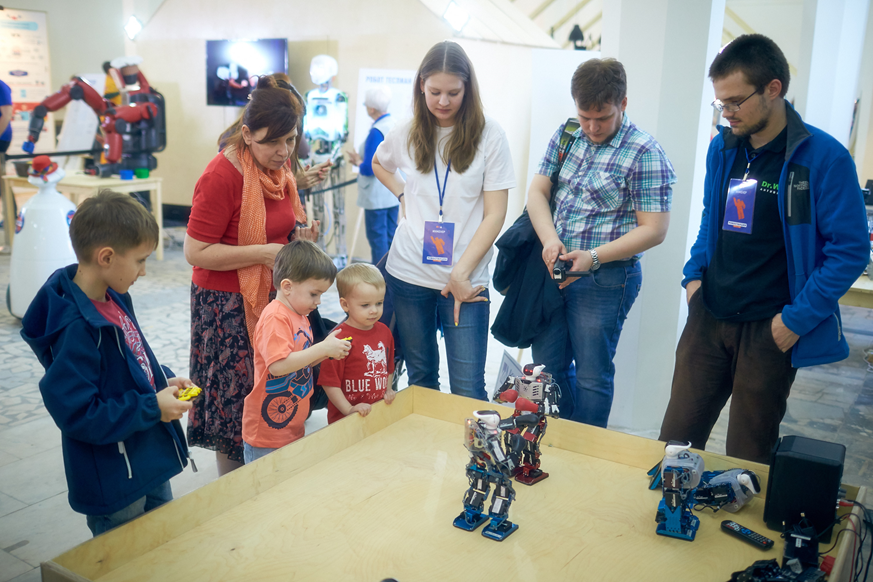
Boxing

Football
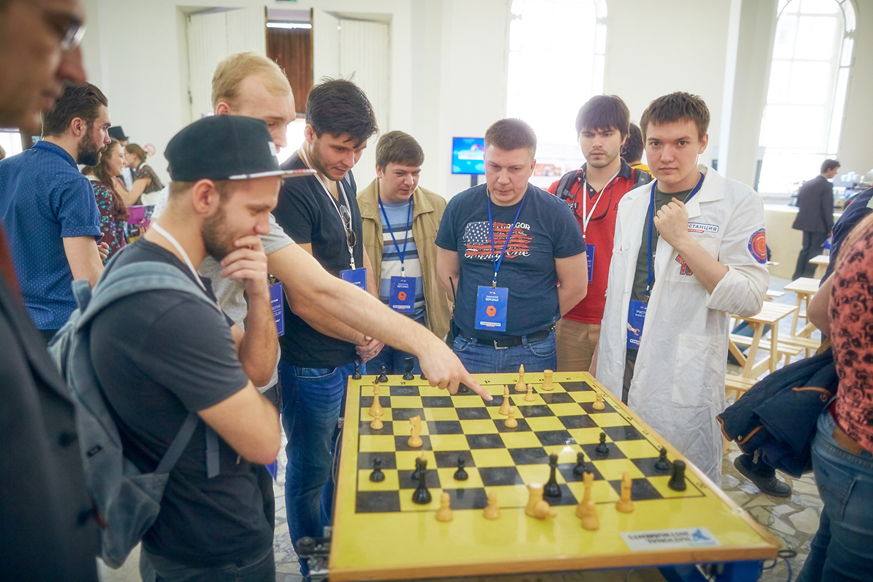
Chess
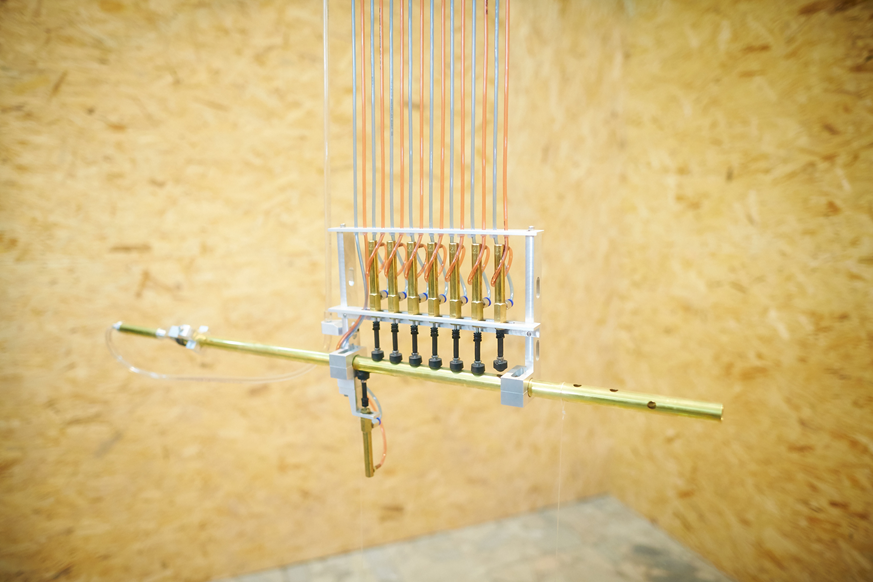
Music
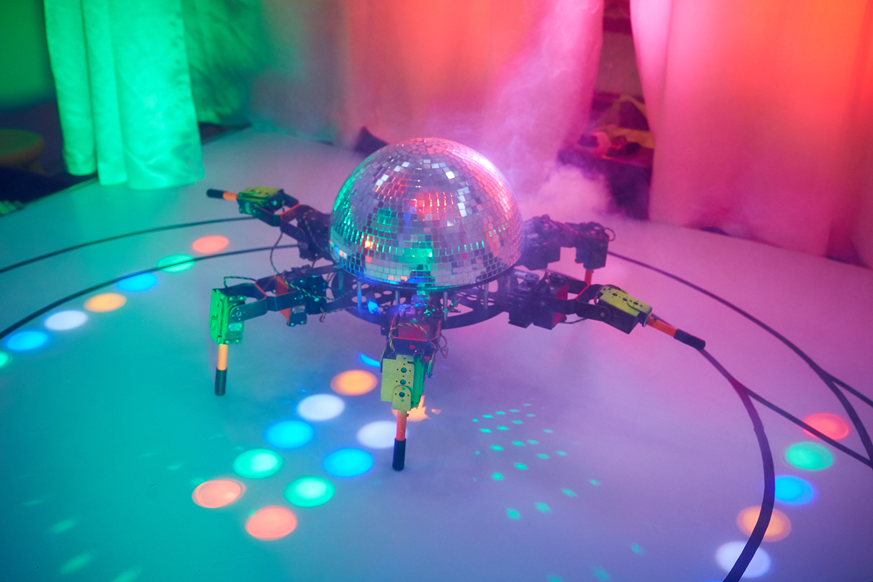
Dancing!

Still dancing

Something strange

Something more incomprehensible

Something completely mysterious
In general, the children's section consists of three parts, these are the Rooster School, the Secret Design Bureau and the presentation hall. You can take the child for a whole day or write for the whole summer - and this is probably the first place where children sit quietly at their desks and enthusiastically construct their robots.
No unnecessary movements - these are for us robots fiction and entertainment, and our children living with them - for them this is life now.

Grab what you can - the robot dropped the gravity module!

Hana your gravity.
On this optimistic note, perhaps we will finish. Behind the scenes, there are still half of the exhibition and its heart is the Rooster School. I'll tell you about it in the next post - I will go to it as a simple student and try to make my own robot.

And you come to the Robotan Station and see everything with your own eyes, the exhibition is open every day from 11 to 22 and will close only on August 23.
Source: https://habr.com/ru/post/257527/
All Articles